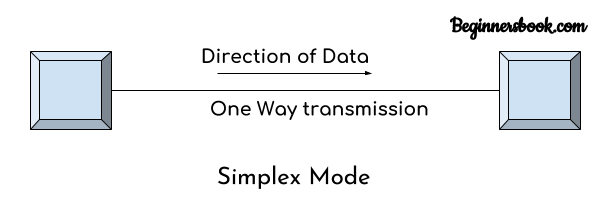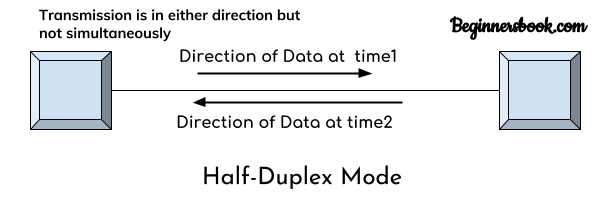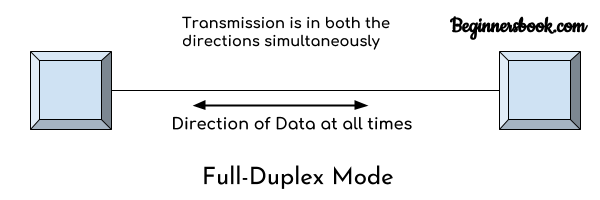The data is transmitted from one device to another device through a transmission mode. The transmission mode decides the direction of data in which the data needs to travel to reach the receiver system or node. The transmission mode is divided in three categories:
1. Simplex
2. Half-Duplex
3. Full-Duplex

Simplex Mode

1. In simplex mode the data transmits in one direction only, from one system to another system.
2. The sender device that sends data can only send data and cannot receive it. On the other hand the receiver device can only receive the data and cannot send it.
3. Television is an example of simplex mode transmission as the broadcast sends signals to our TV but never receives signals back from our TV. This is a unidirectional transmission.
Advantages of Simplex Mode:
The full capacity of the transmission medium is utilised as the transmission is one way and cannot have traffic issues.
Disadvantages of Simplex Mode:
No bidirectional communication is possible. Two devices cannot communicate with each other using simplex mode of transmission.
Half-Duplex Mode

1. In half duplex mode transmission can be done both ways which means if two systems are connected with half-duplex mode of transmission, they both can send and receive data but not at the same time.
2. If one device is sending data then other device cannot send data until it receives the data which is already in transmission. You can say that the communication is not simultaneous.
3. The radio communication device that our soldiers use at the battle fields are the examples of half duplex mode transmission as they send message and then say over and then the person on other hand send his message and this way they communicate but not simultaneously like we used to do on mobile.
Advantages of Half-Duplex mode:
Both devices can send and receive data.
Whole bandwidth can be utilised as at a time only one signal transmits.
Disadvantages of Half-Duplex mode:
The disadvantage in half duplex mode is that the other device cannot send data until it receives the data which is already in transmission, this can cause delays to the communication.
Full Duplex Mode

1. In full duplex mode both the connected devices can send and receive data simultaneously. The mobile phone we use is an example of full duplex mode where we can communicate simultaneously.
2. Both the devices can send and receive the data at the same time.
Advantages of Full Duplex mode:
No delays in communication as both can send and receive data simultaneously.
Disadvantages of Full Duplex mode:
No proper bandwidth utilization as the same line is used for sending and receiving data at the same time.
Mellisa says
This information is very clear and straight forward.Thank you for that
R Macleod says
I was looking for a basic simple recap on computer networks. This tutorial gave me the information I needed